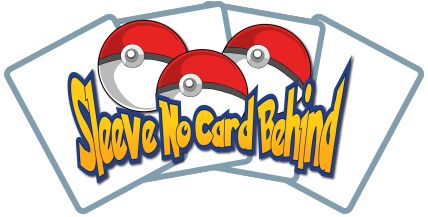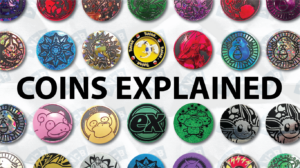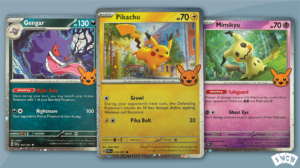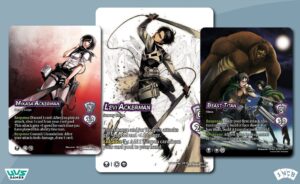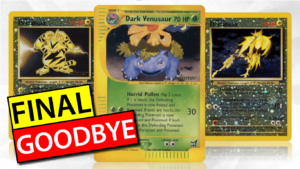So you have an old collection of Pokémon cards, but don’t know what to do with them. That’s ok. Actually, many people are in the same boat, and this article is designed to solve that problem.
This is a crash course on which cards are valuable and how you can make the most amount of money for your cards.
Which Cards Are Worth Money?
If you’re not actively trading and collecting cards, you might not know what to look for. To the uninitiated, all Pokémon cards look the same. This is why it’s important to understand what makes cards expensive.
1st edition
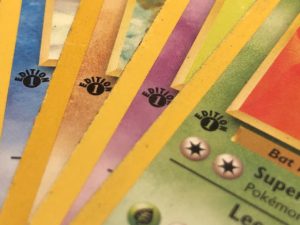
When Wizards of the Coast printed a new set of cards, the first print run was deemed the “1st edition print”. These cards have a small black 1st edition stamp outside the lower-left corner of the illustration box.
When the first print was finished, more cards would be printed but without the stamp. These are referred to as “unlimited print”.
1st edition cards are more valuable due to their rarity. There are far fewer 1st edition copies than unlimited, so collectors desire the rare or “original print” copies.
Shadowless
Shortly after their North American release, Pokémon cards got a visual overhaul in hopes of boosting interest. This included deeper, richer colors as well as a drop shadow behind the illustration box. This shadow is most prominent on the right side of the illustration box and is the quickest way to identify the card as either shadowless or unlimited.
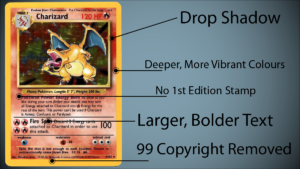
The cards didn’t receive this refresh until after the 1st edition run had finished. Only unlimited cards got the new visuals. This means that there is no such thing as an unlimited 1st edition Pokémon card from the original 1999 Base Set, as long as the card is in English (other languages can be found in both unlimited and 1st edition).
In other words, all 1st edition Base Set cards are shadowless, but not all shadowless are 1st edition.
However, there is one exception. Machamp, number 8 of the original 16 holo cards, was always printed with a 1st edition stamp. This was actually a promotional card and was not included in the booster packs.
Holofoils
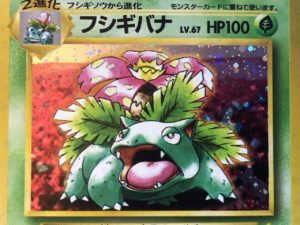
Most trading cards are simple card stock with a design printed over top. However, some card stock is treated with an aluminum foil layer, resulting in appealing refraction of the light spectrum. Holo cards are rarer than regular cards, cost more, and for these reasons, are highly sought-after by collectors.
Promotional Cards
A promotional card or ‘promo’ is precisely what it sounds like- a card given away or included with a product as a promotion. For example, purchasing a cinema ticket for the 1999 film Pokémon The First Movie: Mewtwo Strikes Back would include a free promotional card featuring Ancient Mew.
Promo cards can be highly valuable or not valuable at all. It depends on the number of that card printed vs. the desire for collectors to obtain it. The Ancient Mew mentioned earlier is over 20 years old, but still isn’t that valuable because so many were made.
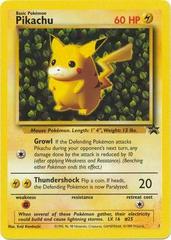
Most promo cards are going to have a black star symbol on them, with the word ‘PROMO’ in them.
Determine The Condition Of Your Cards
Condition is the most important factor when it comes to buying/selling Pokémon cards. Collectors want the best of the best, and one small scratch or crease can significantly drop the price of a very important card.
On the secondary card market, there is a condition scale that is used.
Condition Guide
Near Mint (NM)
This is the highest descriptor of a card condition you and I can claim. For a card to be declared perfectly mint, it has to be closely analyzed by a reputable grading company. For buying/selling raw cards, near-mint is the best of the best.
A near-mint card must show minimal wear and must appear to be unplayed. Some edge wear or minor flaws, such as light scratches, are acceptable.
Lightly Played (LP)
This is precisely what it sounds like- a card that has been played, but only very lightly. An LP card can have some flaws, such as minor scuffs, scratches, and edge or corner wear. An LP card cannot have any creases, dents, or visible dirt on the card.
A card is often claimed to be LP if it has too many flaws to be NM.
Moderately Played (MP)
An MP card can have a number of flaws ranging from light scratches or scuffs to moderate edge wear, whitening, or even creases. If a card has a crease, it is automatically downgraded to at least MP. If a crease does not affect the card’s integrity, then it is acceptable on an MP card.
A card in moderately played condition was likely not stored in a sleeve.
Heavily Played (HP)
HP is assigned to cards that have been used far past their prime and are evidence of poor storage, poor handling, and overall neglect. This is when we start to see things like large creases, deep scratches, moderate to heavy edge wear, and prominent whitening.
Damaged (D)
This is the worst condition that a card can be in.
A damaged card will have many flaws but will also exhibit a loss of structural integrity. Creases that have resulted from folds or bends will cause a card to be damaged, along with anything that will result in delamination, such as water damage.
Tcgplayer has provided a free PDF that goes into great detail on determining the condition of a card. If you need further aid in determining a card’s condition, visit their website.
Whitening
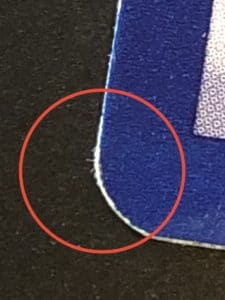
A common type of damage is called whitening. This is when the edges of the card begin to show ear, and the white part of the card stock begins to show. On a Pokémon card, whitening is easier to see on the reverse edges of the card.
Scratches
Scratches are self-explanatory. When checking for scratches, pay close attention to the holo surface if the card has one. The aluminum treatment of the card is very fragile and can scratch easily.
Creases And Wrinkles
A crease is among the worst outcomes when assessing card damage. Creases can not be fixed and usually drop the price of a card significantly.
Warping
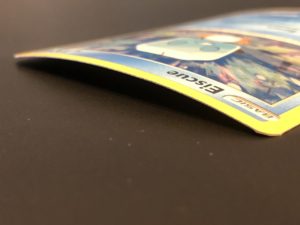
Warping is when a card is curved or has a slight bend to it. This often occurs from humidity, as the card wants to expand but the foil layer will not allow it.
Luckily, this isn’t considered damage because it can be fixed. Check out our full guide on warping here.
How To Find The Value Of Your Cards
Each unique card sells for a different price. This is because of the Pokémon on the card, the rarity, the condition, and many other factors.
There are plenty of communities and websites that can help you search for a card and find the price but above all, we like to use eBay.
eBay Sold Listings
Now, don’t go looking through listings yet. Just like any buy-and-sell market, people can set whatever price they want. This often leads to misinformation, as someone will ask a ridiculous amount for a cheap card and mislead the people who see the listing into thinking its value is high.
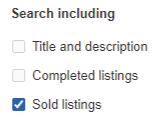
People list their cards for crazy prices. This is why we go to the search filters and check the box that says “sold listings”. What this does is show us only the listings that have been sold. This way, you can see what people are actually paying for your cards.
So, go to eBay and search for the card name, followed by the set number, followed by the condition. For example, ‘Alakazam 1/102 MP’. After that, just check the ‘sold listings’ box and you’ll see exactly what your card is worth and all of the most recent sales.
In the odd scenario that your search yields no results, it is then time to check other websites that list prices.
Other Sources
- Tcgplayer.com
- Trollandtoad.com
- Pokedata.io
- pricecharting.com
How To Sell Your Pokémon Cards
Ok, when it comes to selling Pokémon cards, you have two options:
- Online
- Locally
Either is fine, with its own advantages and disadvantages. For example, selling online will often get a lot more attention, but most sites are going to take a small cut of the sale.
But if you want to sell fast and you don’t mind if you lose a few bucks less in the process, eBay is your best bet.
eBay
eBay is the world’s largest card market, with thousands of Pokémon cards bought and sold weekly. The card market is so huge that I sometimes use eBay as a research tool since almost every Pokémon card has at least one listing at any given time.
This means that your listing will be seen, and it will be seen by many.
Some other benefits of selling your cards on eBay include listing the card as an auction or at a set price. When listing the card as an auction, you have the benefit of a bidding war breaking out, which can be very exciting.
The only downside of using eBay is that eBay will take a small fee when your item sells.
But listing cards can be easy and done right from the eBay app on your phone. Just make sure you take plenty of well-lit photos. Typically, you’ll list a photo of the front of the card, the back of the card, and a close-up of each corner front and back. This will make for a total of 10 photos and will save your butt if the buyer opens a dispute.
Professional Guide
Check out our newest ebook Appraise Pokémon Cards for a much more in-depth guide on selling an old collection. This 86-page ebook is full of information that expands greatly upon the main points in this article.
The ebook also has over 100 reference photos, so you don’t have to go Googling every single card.
Final Thoughts
Selling an old collection isn’t easy if you want to make money. It takes a little bit of work, but it’s well worth it. Some Pokémon cards are worth a lot of money, and it’s not uncommon to find a couple four figure cards in a vintage collection.
That’s why it’s so important to do your due diligence, learn a little bit, and have fun along the way.
